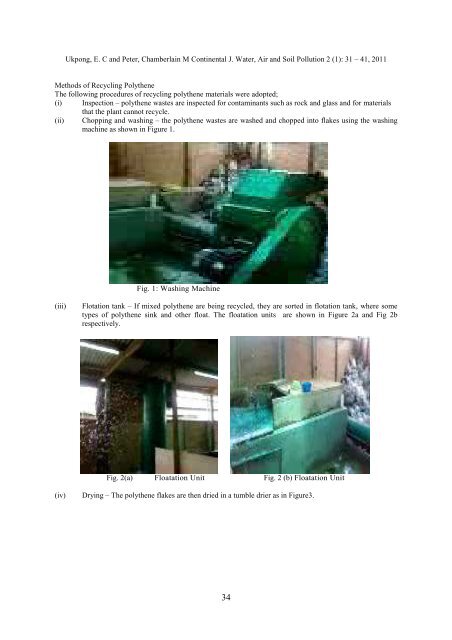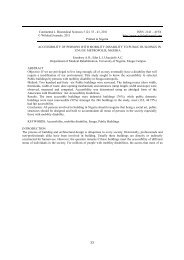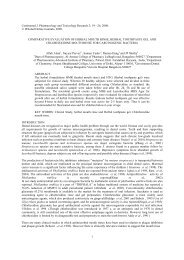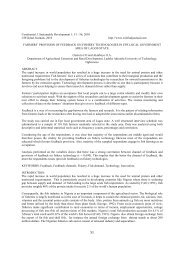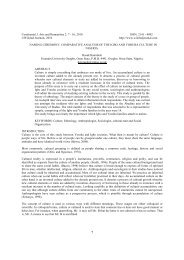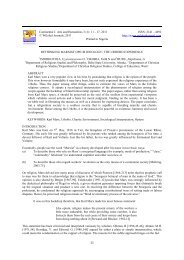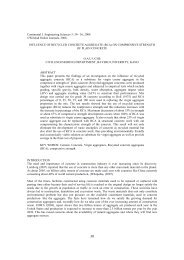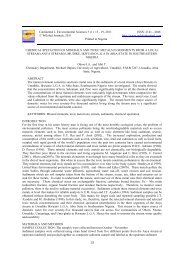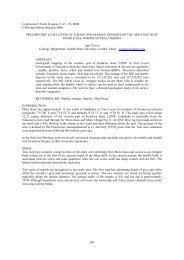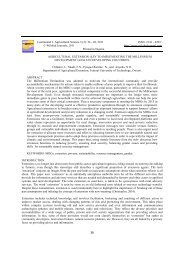Vol 2 _1_ - Cont. J Water, Air and Soil Pollution - Wilolud Journals
Vol 2 _1_ - Cont. J Water, Air and Soil Pollution - Wilolud Journals
Vol 2 _1_ - Cont. J Water, Air and Soil Pollution - Wilolud Journals
You also want an ePaper? Increase the reach of your titles
YUMPU automatically turns print PDFs into web optimized ePapers that Google loves.
Ukpong, E. C <strong>and</strong> Peter, Chamberlain M <strong>Cont</strong>inental J. <strong>Water</strong>, <strong>Air</strong> <strong>and</strong> <strong>Soil</strong> <strong>Pollution</strong> 2 (1): 31 – 41, 2011Methods of Recycling PolytheneThe following procedures of recycling polythene materials were adopted;(i) Inspection – polythene wastes are inspected for contaminants such as rock <strong>and</strong> glass <strong>and</strong> for materialsthat the plant cannot recycle.(ii) Chopping <strong>and</strong> washing – the polythene wastes are washed <strong>and</strong> chopped into flakes using the washingmachine as shown in Figure 1.Fig. 1: Washing Machine(iii)Flotation tank – If mixed polythene are being recycled, they are sorted in flotation tank, where sometypes of polythene sink <strong>and</strong> other float. The floatation units are shown in Figure 2a <strong>and</strong> Fig 2brespectively.Fig. 2(a) Floatation Unit Fig. 2 (b) Floatation Unit(iv)Drying – The polythene flakes are then dried in a tumble drier as in Figure3.34


